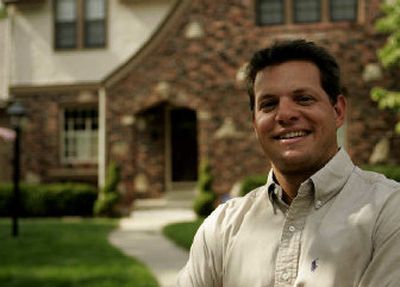On borrowed time

NEW YORK — For Kim and James Merly, the home equity line of credit came in very handy — it helped pay for their son’s college education, a car and renovations of two rental properties.
Recently, the Fairfield, Conn., couple noticed their interest rate had jumped to 6 percent from the 4 percent they paid in January 2004 when they first opened the account. They decided it was time to pay off the credit line.
Homeowners nationwide have seen their home equity borrowing costs rise since the Federal Reserve began raising interest rates more than a year ago. Many, like the Merlys, now want to pay off the loans, which no longer look as attractive as they did a few years ago.
The rising rates mean consumers may have to rein in their spending; home equity lines of credit have been a major source of funding for big-ticket expenditures. That could in turn have broader implications for the economy which has grown in part due to consumer spending amid record low borrowing costs.
“There has been a false sense of financial security many consumers have been living under” with low interest rates, said Chris Viale, of Cambridge Credit Counseling Corp.
“I love the home equity, but it’s got its pitfalls with the rates that go up and down. Basically it is just a glorified credit card,” said Kim Merly, a part-time office administrator who manages two properties that she and her husband, a construction contractor, rent out.
Like credit card rates, home equity loan rates have risen over the last year, much to the chagrin of consumers whose rate of savings has dropped as borrowing money has become easy and inexpensive.
“That home equity was increasing over time. You keep looking (at the monthly statements) and you realize you want something different, just get rid of the chance of it rising more,” said John Ammatelli, a sales consultant for a surgical equipment company. He recently paid down a home equity line on his Kansas City, Mo., home.
Mortgage bankers like James B. Nutter Jr. of Kansas City have found more people are coming through his door looking for ways to pay off their home equity credit lines. “With the rising rate environment, they want to get rid of it,” he said.
Viale said many consumers have been surprised by the steady rise in borrowing costs. “They are shocked by the increases (in monthly payments) they are getting,” said Viale, who recommends consumers cut back on spending, create working budgets and pay down debt.
When the Fed changes its monetary policy, it typically does so by tweaking the federal funds rate, the interest banks charge one another on overnight loans. The series of rate hikes by the Fed that began last summer have in turn prompted U.S. banks to increase their prime rates, which serve as a benchmark for a variety of loans including home equity lines of credit.
In the beginning of 2004, the prime rate was at 4 percent; it now stands at 6.50 percent.
“This has been a long, sustained rise,” said Amy Crews Cutts, deputy chief economist at Freddie Mac, who believes the Fed may raise interest rates two more times by year-end, bringing that prime rate to 7 percent.
The last time the prime rate averaged about 7 percent was June 2001.
Many consumers like the Merlys are refinancing their first-lien mortgages and withdrawing cash, so-called cash-out refinancings, to pay down home equity lines of credit which can range in size from $25,000 to $40,000.
According to a study by Freddie Mac, cash-out refinancings rose in the second quarter of this year to levels not seen since the fourth quarter of 2000.
Freddie Mac, one of the two federal agencies that help lenders get money for home loans on Wall Street, could not pin down how many cash-out refinancings were used to pay down home equity lines of credit. But Crews Cutts believes the rising rates for home equity lines were a big driver.
“Interest rates are going up. … Home equity lines of credit are looking relatively ugly right now.”